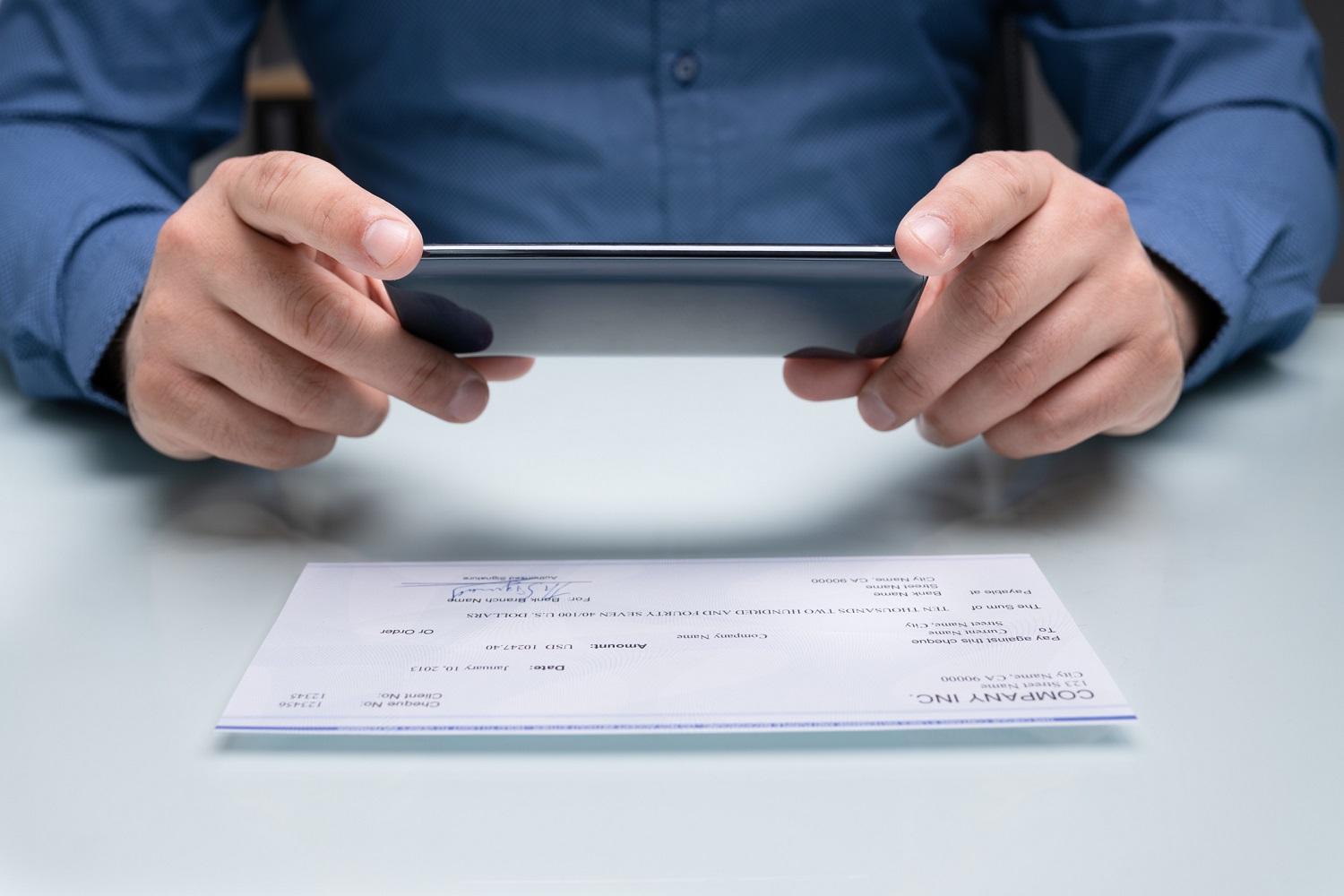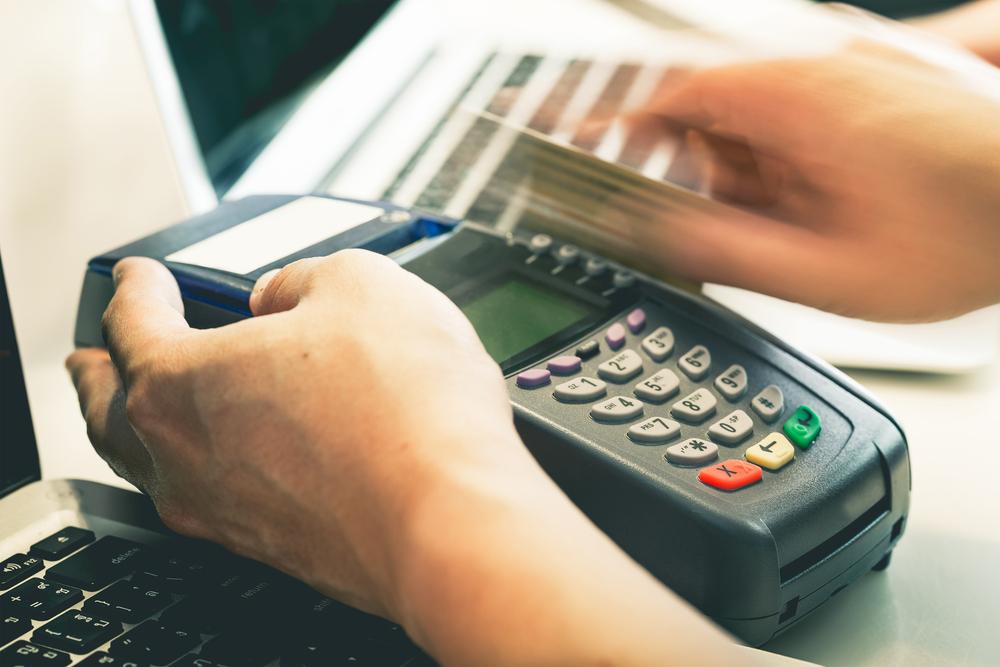Business News Daily provides resources, advice and product reviews to drive business growth. Our mission is to equip business owners with the knowledge and confidence to make informed decisions. As part of that, we recommend products and services for their success.
We collaborate with business-to-business vendors, connecting them with potential buyers. In some cases, we earn commissions when sales are made through our referrals. These financial relationships support our content but do not dictate our recommendations. Our editorial team independently evaluates products based on thousands of hours of research. We are committed to providing trustworthy advice for businesses. Learn more about our full process and see who our partners are here.
Paycards vs. Direct Deposit: Which Is Right for Your Business?
Understanding the pros and cons of direct deposit and paycards can help employers make the right choice for their business and their employees.

Table of Contents
An important part of any business is how employees receive wages. When there are several options, it’s up to the employer to decide which one they will offer. Two popular paperless payment methods are direct deposit and paycards, the latter of which is also known as payroll cards. There are pros and cons to both payroll cards and direct deposits and key details about both methods will help you determine whether payroll cards or direct deposit is right for your business and employees.
Let’s start with the basics.
What is direct deposit?
Direct deposit is an electronic transfer payment made directly from an employer’s bank account to an employee’s savings or checking account for net wages earned. Direct deposit payments are governed by the National Automated Clearing House Association, a nonprofit that oversees the ACH network and other areas of electronic payments.
Editor’s note: Need a payroll service for your business? Fill out the below questionnaire to have our vendor partners contact you with free information.
What is a paycard?
A paycard is a prepaid card offered by an employer to pay an employee’s net wages. Paycards function like a debit card, with the employer submitting wages via routing number and account number. [Related article: What Is a Paycard?]
Cardholders can withdraw cash and make a balance inquiry, although these requests can incur fees if used too often or not often enough. Paycards are regulated by state laws, so you might have additional factors to consider depending on your state. This can be a positive as some states are making efforts to reduce fees that affect employees.
Why you should consider direct deposit and paycards
There are various reasons an employee or employer might favor one method over the other. Direct deposit requires the employee to have a savings or checking account to deposit funds while a paycard is simply a prepaid, reloadable card that requires no bank account. However, direct deposit allows an employee to divide their paycheck into several accounts while with paycards, a net wage is transferred each pay period. This can limit the flexibility of distributing one’s wages, though some people find it convenient to host all wages in one easily accessible place.
For employers, both direct deposit and paycards offer the benefit of a paperless payroll distribution process. Both payment methods also allow an employer to electronically transfer funds if an employee is sick, on vacation or working remotely.
Direct deposit tends to be the norm for U.S. workers. Many employees opt in, allowing their employers to deposit their net wages into their checking or savings account or perhaps both.
Should your business use direct deposit or paycards?
The decision of whether to pay employees through direct deposit or paycards will depend on your company’s specific needs, employee demographics and the type of business you run. Direct deposit is convenient because it eliminates the need for writing and distributing physical checks, but if a significant percentage of your employees do not have bank accounts it would not be a good option.
Similarly, while paycards can provide employees with a convenient way to make purchases and also reduce processing costs for employers, if your employees prefer a more reliable savings option, it might not be the best choice.
When selecting the best employee payment option, it’s important to be aware of the potential benefits and drawbacks of both.
Direct deposit pros include:
- Efficiency: Because this is an electronic transfer, funds deposited to employees’ accounts are available almost immediately. Direct deposit also saves time and enhances productivity on both ends. Employees don’t have to interrupt their workday to run to the bank to deposit their check, while employers don’t waste time printing and sending out checks.
- Decreased risk of theft and fraud: Since they’re electronic, direct deposits reduce the risk of theft and fraud, whereas paycards can be lost or stolen.
- Low fees: Employees do not have to pay fees to have their checks electronically deposited into their accounts or to access their funds.
- Paperless method: Direct deposit is a paperless payroll distribution process, allowing employers to transfer funds electronically whether an employee is sick, on vacation or working remotely.
- Flexibility: Direct deposit is a more flexible option, as it allows employees to divide their paychecks into several accounts. For instance, they might want half of their paycheck to be deposited into their checking account while the other half goes into their savings account.
However, there are some potential drawbacks or cons for employers and employees.
Direct deposit cons include:
- High fees for employers: With direct deposit, employers pay a setup fee in addition to a transaction fee each time they deposit wages into an employee’s account. The payroll software or service provider may also charge a fee.
- Lower accessibility: Direct deposit requires employees to have a savings or checking account. Some employees might not even have a bank account, making this payment option completely inaccessible to them.
- Overdraft fees: If an employee makes a purchase that exceeds the funds in their account, they can get hit with a hefty overdraft fee.
Paycard pros and cons
A paycard is a prepaid, reloadable card that requires no bank account. A net wage is transferred to an employee’s card each pay period. While it’s not as common as direct deposit, it’s growing more popular each year.
Pros include:
- Paperless method: Like direct deposit, paycards allow for a seamless, paperless transfer of wages â no checks required.
- Low risk of debt or financial liability: When it comes to theft and fraud, paycards are governed by the same rules as debit cards.
- Convenience: Paycards, similar to direct deposits, are convenient for both employers and employees. Employees do not need to cash checks or wait for funds to appear in their bank accounts while employers do not need to send out paper checks to their workers but load employees’ wages onto their cards.
Cons include:
- Fees for both employers and employees: With paycards, both employees and their employers pay fees. For instance, some paycards charge a fee for ATM withdrawals or a point-of-sale (POS) fee each time the card is swiped. Some even charge fees to check your balance or if you don’t use your card within a set period of time (an inactivity fee). However, these fees tend to be lower than those associated with direct deposit and other payment methods.
- Frozen cards: One serious disadvantage of using a paycard is that some service companies, such as hotels, rental cars and airlines, place a temporary hold or “freeze” on a card for days or even weeks. If this is an employee’s only means of payment, such as if they do not have a bank account to withdraw from, they’ll be out of luck when it comes to making any sort of payments.
Direct deposit and paycard fees
An additional benefit of direct deposit and paycards is that you don’t have to pay for checks, ink and printing. However, this is a trade-off for other fees. Direct deposit employers pay a setup fee and a transaction fee for each time they deposit wages into an employee’s account. The payroll software or service provider may also charge a fee.
Paycard fees mostly affect employees. For example, some paycards charge a fee for ATM withdrawals, a POS fee each time the card is swiped, fees to check your balance or inactivity fees.
Paycard fees are becoming more transparent, though. On April 1, 2019, the Consumer Financial Protection Bureau issued a rule that paycard providers must disclose these fees to cardholders.
Direct deposit and paycard theft and fraud
Paycards have the same security rules as debit cards. If you report a stolen or lost paycard within two days, the Electronic Fund Transfer Act limits your liability to $50. The maximum loss increases to $500 if you report it more than two business days after noticing its loss but within 60 days after you receive your statement.
A cardholder is not liable if a stolen card number is used and a crime is reported within 60 days of the balance statement. One serious disadvantage of using a paycard is that service companies such as hotels, rental cars and airlines can place a temporary hold or “freeze” on a paycard for days or weeks.
From the employer side, however, paycards and direct deposit are relatively secure ways to pay employees â especially for those without a bank account, in the case of paycards.
The best payroll services offering direct deposit and paycards
There are a variety of payroll service providers that offer different features and options. For example:
- OnPay has great options for startups, with straightforward and affordable pricing, along with employee self-service features. Read our OnPay payroll software review.
- ADP is ideal for companies that are scaling and looking for a convenient option that will grow along with them to manage payroll and HR tasks. Find out more with our ADP payroll software review.
- Remote is a good option for onboarding employees and contractors, especially in hybrid or remote environments. It offers extensive contractor tools with no contracts or minimum headcounts.
- Paycor is a great employee self-service option, with a robust employee portal, comprehensive HR tools and benefits administration capabilities. Learn more with our Paycor HR software review.
- Papaya Global offers options for global workforces, with services offered in 160 countries. It supports a dozen different currencies and provides a colorful, intuitive interface. Discover everything you need to know with our Papaya Global review.
Ask employees their payment preference
Employees tend to prefer direct deposit, but as a business owner or employer, you might want to ask your employees about their preferred payment method. Ask them what benefits, such as convenience and low fees, matter the most to them. As part of this conversation, be open about your findings. Gathering this data and input from employees will hopefully make your choice an obvious and easy one for all parties involved.
Linda Pophal and Kayla Harrison contributed to this article.

















